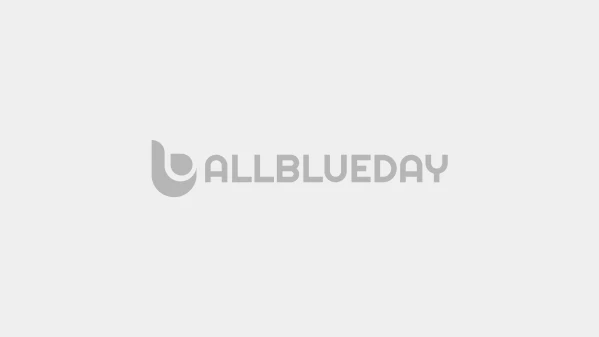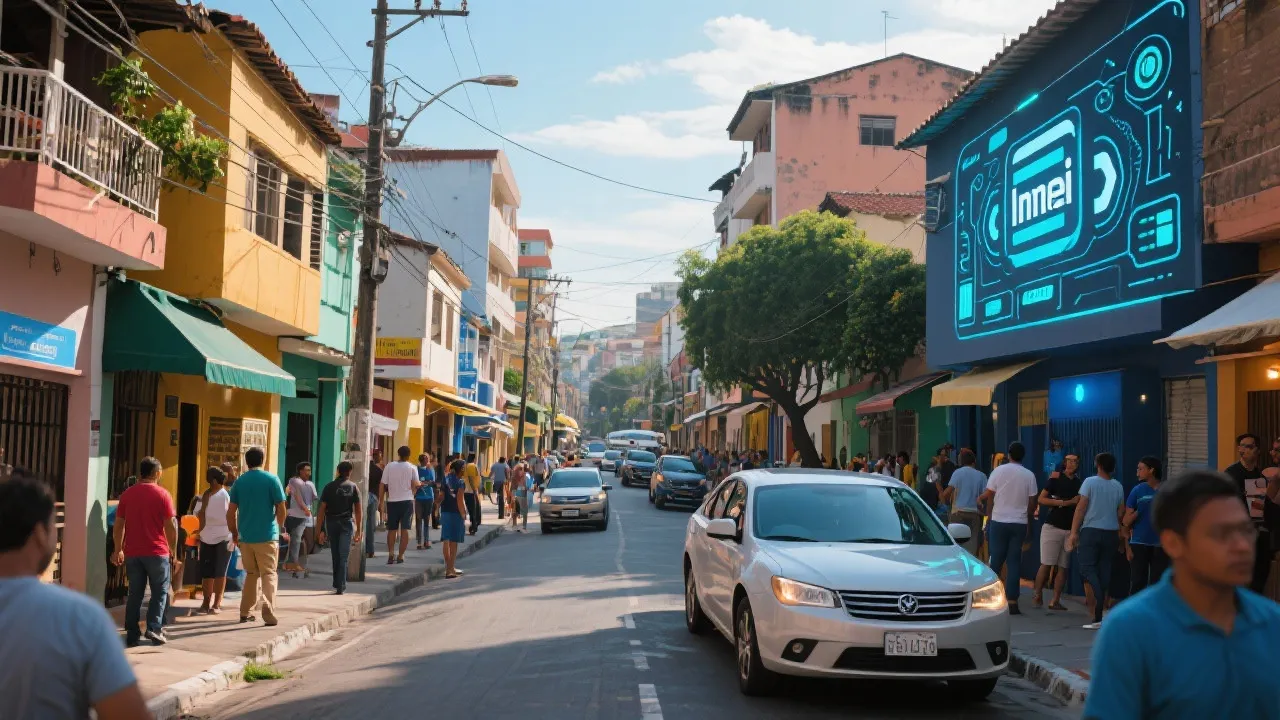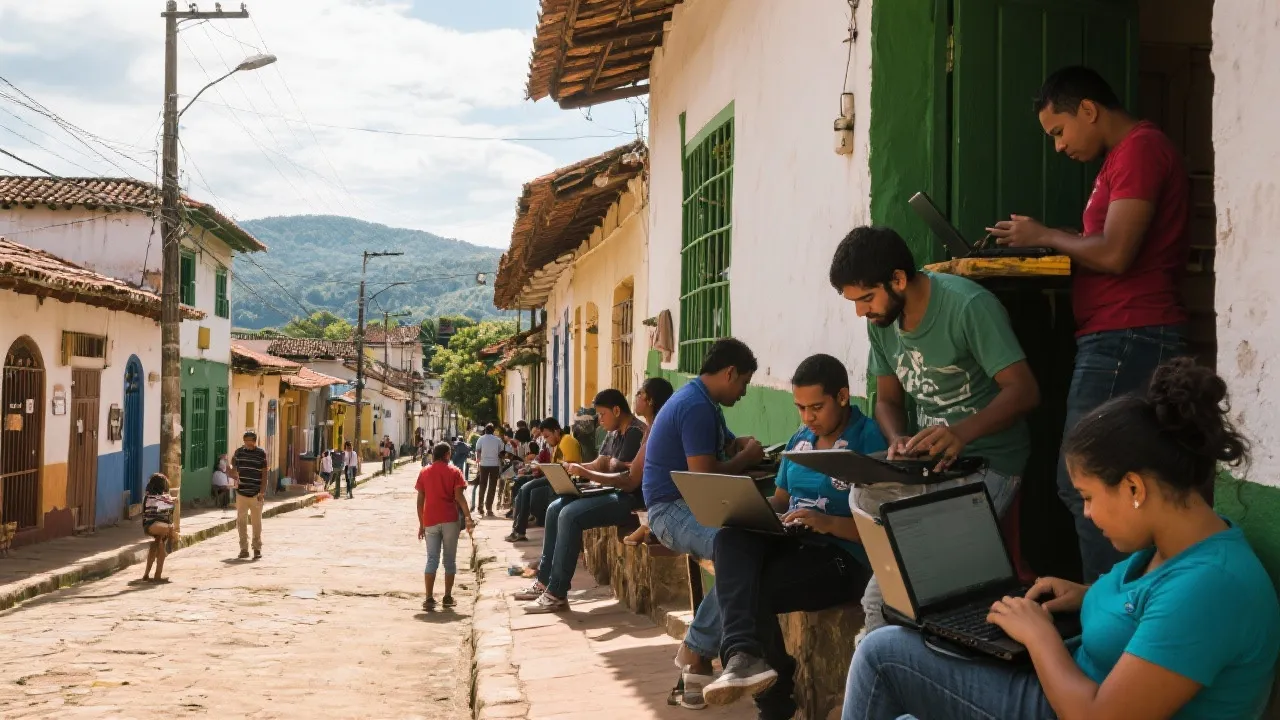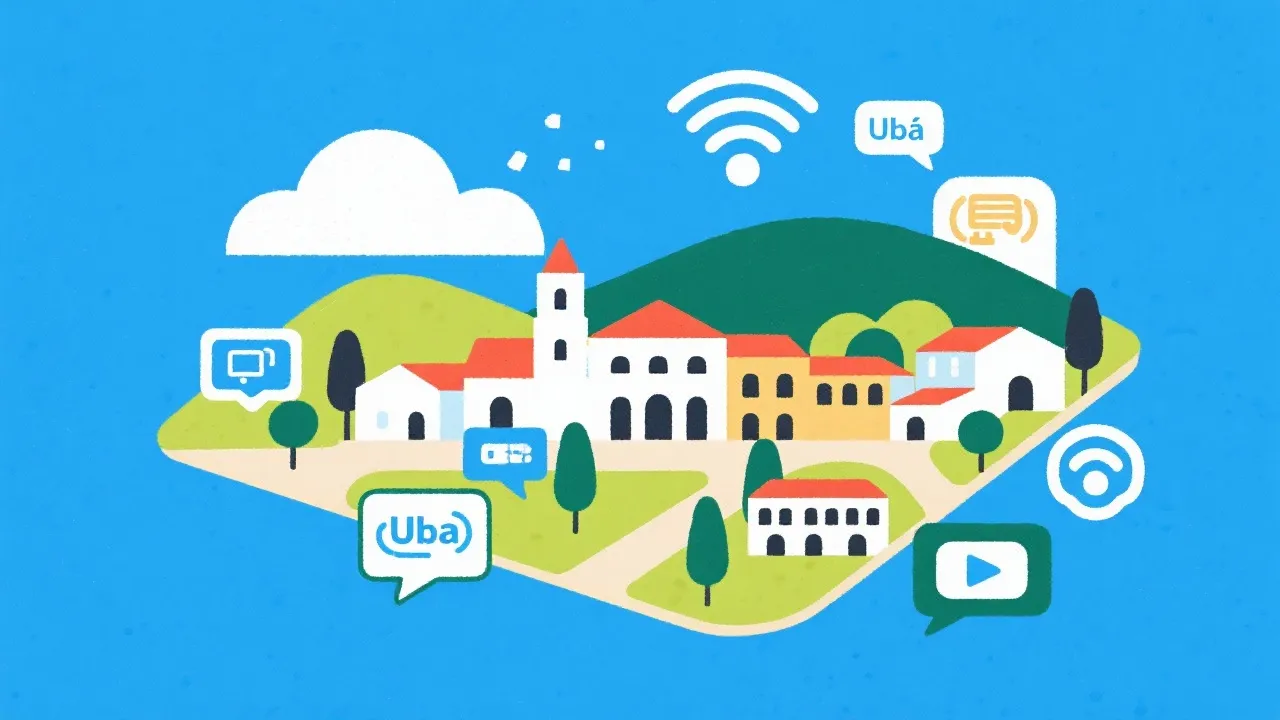Navigating Internet Options in Ubá
In this comprehensive guide, we explore the various internet service options available in Ubá, providing insights into different plans, features, and pricing. Ubá is a city that is expanding its digital capabilities, and residents have access to a mix of fiber, broadband, and 5G technology options catering to different user needs and budgets.

Understanding Internet Connectivity in Ubá
As the digital landscape continues to evolve, residents of Ubá are presented with a growing array of internet service options. Whether for personal, educational, or business use, understanding these choices is crucial for making informed decisions. This guide explores the leading internet service providers in the region, their offerings, and tips for maximizing internet access cost-effectively.
Internet Service Providers in Ubá
Residents in the area can choose from several internet service providers, each offering unique plans tailored to different internet usage needs. Below is a comparative table highlighting the notable options:
| Provider | Plans & Pricing | Features |
|---|---|---|
| Xfinity Internet | - Connect: $19.99/month for up to 50 Mbps - Connect More: $39.99/month for up to 100 Mbps |
No contracts, access to Wi-Fi hotspots |
| AT&T Fiber | - Fiber 300: $55/month - Fiber 500: $65/month |
Symmetrical speeds, reliable fiber |
| Spectrum Internet | - $50/month for 500 Mbps - $70/month for 1,000 Mbps |
Unlimited data, no contract, free modem |
For more information and to apply for a plan, please visit the following websites:
– Source: Xfinity– Source: AT&T
– Source: Spectrum
Maximizing Internet Access Affordably
1. Compare Plans and Prices: Start by analyzing the different offerings. The selection ranges from basic, budget-friendly plans to high-speed packages. Comparing introductory offers and ongoing costs can aid in identifying the best options. Some providers may entice new customers with lower initial rates, so it’s worthwhile to also pay attention to potential price hikes after the promotional period ends. Building a spreadsheet to track prices and features can be a useful strategy.
2. Utilize Discounts and Promotions: Some providers offer discounts for auto payments or bundled services. These savings can significantly reduce monthly expenses. It is worthwhile to inquire about any current promotions during sign-up. For instance, certain schools and universities have arrangements with internet providers that allow students and staff to receive significant discounts on their service plans.
3. Assess Actual Needs: Determine your internet usage requirements. For casual browsing or light streaming, lower-speed options might suffice, while high-speed plans will benefit gamers and heavy streamers. If you're predominantly using the internet for social media browsing or checking emails, you may not need an extensive plan. However, if you're working from home, participating in Zoom calls, or hosting online activities, consider investing in higher bandwidth.
4. Leverage Family or Shared Plans: Sharing an internet plan can spread the cost among users, making high-speed packages more affordable. Many providers offer discounts for multiple lines or users, making this a cost-effective option. Additionally, considering how many devices are connected to your home network can inform what plan will meet your household needs without overspending.
Global Internet Pricing Trends
Internet access varies greatly worldwide, influenced by infrastructure, competition, and consumer demand. Here is a comprehensive overview of the pricing landscape in different countries, showcasing how Ubá's offerings compare:
United States: Prices range from $30 to $100+, with availability of fast broadband and fiber connections (up to 1 Gbps), mainly in urban areas. For customers in rural regions, options may be limited, impacting access and pricing structures substantially. Understanding local governance and initiatives aimed at expanding broadband access can also shed light on future improvements.
United Kingdom: Pricing spans £25 to £60+, where both broadband and fiber are widely used, offering speeds typically from 30 to 100 Mbps. Competitive markets allow for varied pricing strategies, meaning customers can benefit from choosing the right provider or deals at any given time. Enhanced infrastructure projects may lead to updated competition, improving services and affordability in the long term.
Canada: With prices between CAD 50 and CAD 100+, Canadian users have access to diverse fiber and broadband services. The availability of various providers across the provinces enables customers to select the plan that aligns with their financial and speed-related needs. The Canadian government has taken steps to promote broadband connectivity, especially in remote areas, pushing for equitable access across the country.
New Zealand: In New Zealand, the price range is NZD 60 to NZD 100+, with a focus on fiber and VDSL, reaching speeds of 100 Mbps or more. Their government-backed initiatives focus on developing telecommunications infrastructure, making high-speed internet more accessible to both urban and rural communities—even employing creative funding avenues for quick deployment of services as needed.
Australia: Prices range between AUD 60 and AUD 110+, with fiber networks becoming more widespread, generally offering 50 - 100 Mbps speeds. The National Broadband Network (NBN) set out to provide Australians with access to high-speed internet through various technologies, enabling a more comprehensive reach with increasing connectivity in suburban and rural areas.
Singapore: Known for affordable high-speed internet, prices vary within SGD 30 to SGD 60+, with fiber speeds up to 1 Gbps thanks to intense competition. The country’s robust and modern telecommunication landscape, along with initiatives to regulate and support competitive pricing, ensures residents and businesses have excellent access to high-speed services.
FAQs
Q: What is the best internet plan for streaming in Ubá?
A: For streaming, a plan offering at least 100 Mbps is recommended. Consider options like "Connect More" from Xfinity or "Fiber 300" from AT&T if available. These plans will support multiple devices streaming simultaneously without buffering issues, ensuring an enjoyable viewing experience.
Q: Are there any affordable internet options for students?
A: Yes, Xfinity's "Connect" plan is particularly budget-friendly and caters to students or light users with its minimal cost. Furthermore, many educational institutions collaborate with community providers to offer students special rates, discounts, or even subsidized internet services based on need or enrollment status, which can help ease financial burdens.
Q: How can I ensure my internet connection remains stable during peak hours?
A: Opt for fiber or higher bandwidth plans, which typically handle congestion better during peak times. Additionally, it's important to consider the time of day when usage is at its peak; adjusting your heavy data activities, such as large downloads or backups to off-peak hours, can also enhance performance. Using a wired connection instead of Wi-Fi may yield better stability during those times as well.
Q: What should I do if my internet is slower than expected?
A: Start by performing a speed test to gauge the connection quality versus the advertised speeds. If you find your speeds significantly lower than what you've subscribed to, try rebooting your modem and router. If problems persist, contact your provider for assistance. Occasionally, issues may stem from ISP outages, servicing, or local infrastructure, which they can clarify.
Q: Can I get internet service without a credit check?
A: Some providers do offer plans that do not require a credit check, especially for base level services or prepaid plans. However, paying a deposit might be necessary for others. Researching options and asking when applying can clarify which path suits your needs without introducing additional financial strain.
Conclusion
Selecting the right internet service in Ubá involves considering one's usage patterns, budget, and the available provider options. By leveraging available promotions and understanding the technology behind each service, users can optimize their internet experience. The growing demand for robust internet connectivity also places pressure on providers to improve offerings, ensuring price competitiveness and wider adoption of faster technologies.
The journey to finding the best internet plan should also include steps like exploring wireless options like mobile hotspot devices, especially for households with fluctuating geographical access issues. Residents should stay informed on new developments in local infrastructure and potential growth in service offerings as technology consistently advances.
As service offerings expand, Ubá residents can expect to enjoy enhanced connectivity powered by technological advancements. Exploring all available options will enable them to find a suitable plan that continues to meet evolving demands, thus providing them with a reliable backbone for their digital interactions.
Disclaimer: The above information is sourced from online resources as of October 2023. Specific access requirements and methods are subject to the official criteria of the respective internet service provider, and this website will not be updated in real-time.
Reference Links:
- Xfinity- AT&T
- Spectrum
-
1

Reducing Costs and Enhancing Technology in Solar Panels
-
2

Affordable Life Insurance Options for Seniors
-
3

Comprehensive Guide to Choosing the Right Smartphone
-
4

Unlock Affordable Online Learning: A Seniors’ Guide to Economical Educational Opportunities
-
5

Discover the Keys to Landing Your Perfect Work-from-Home Job: An Essential Guide









